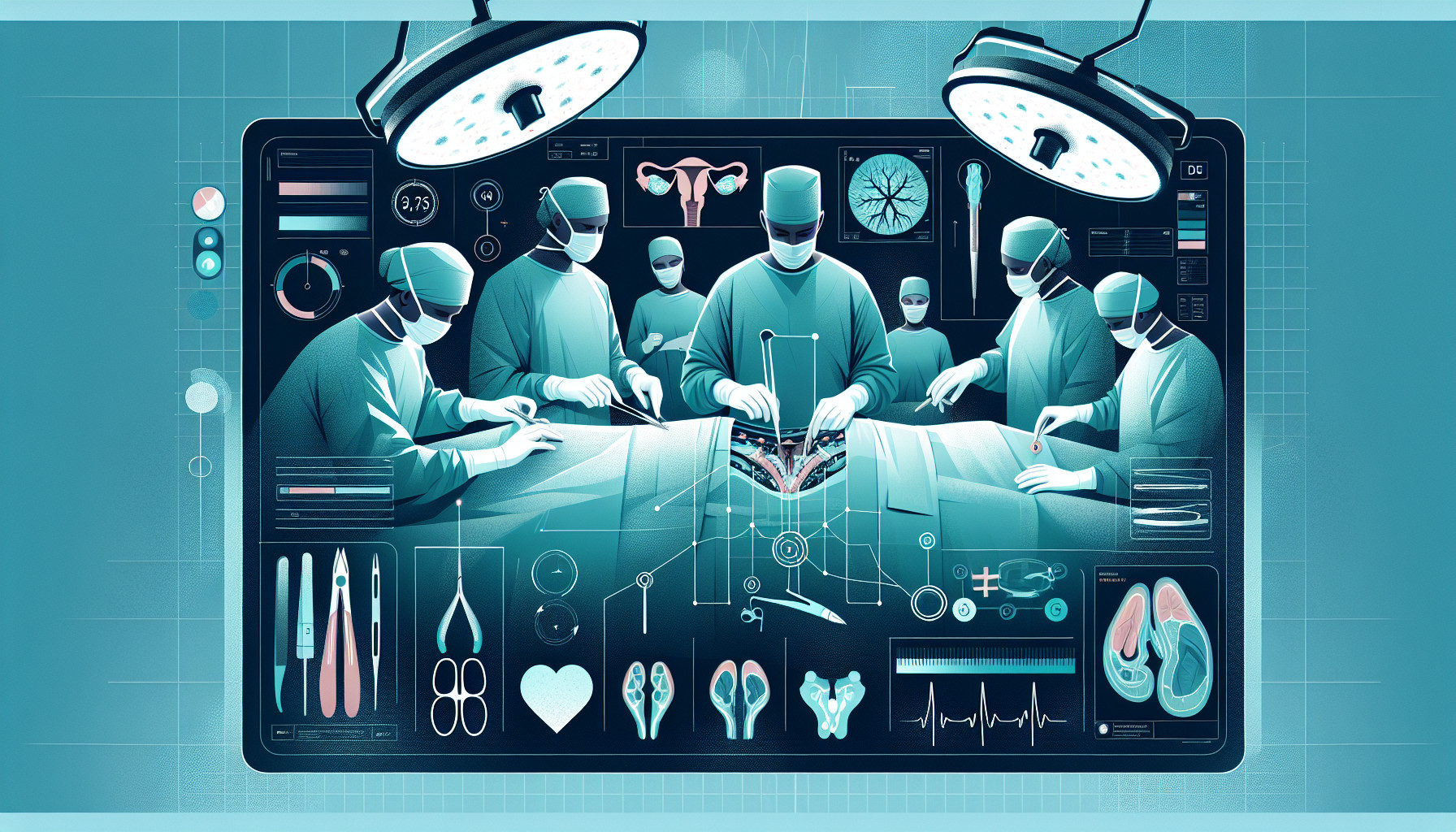Our Summary
The paper discusses seminomas, which make up about half of all testicular cancer cases. Testicular cancer is usually very treatable and is divided into two types: seminomatous and nonseminomatous. The methods for treating these two types are quite different. Surgery is often used for nonseminoma but not as much for seminoma. Most doctors in the US choose to remove the testicle and then keep an eye on the patient for stage I seminoma. For stage II and above, they usually use chemotherapy or radiation and then surgery to remove any remaining masses. However, recently doctors have suggested using surgery more for stage II seminoma to avoid the harmful long-term effects of chemotherapy and radiation. The paper discusses the logic behind seminoma treatment, the role of surgery, and the use of less invasive surgical methods for removing lymph nodes in the back of the abdomen.
FAQs
- What are the two types of testicular cancer discussed in the paper?
- What is the typical treatment method for stage I seminoma and how does it differ for stage II and above?
- What are the potential benefits of using surgery more frequently for stage II seminoma, as suggested by some doctors?
Doctor’s Tip
A helpful tip a doctor might tell a patient about testicular surgery is to follow post-operative care instructions closely to ensure proper healing and minimize the risk of complications. This may include instructions on wound care, pain management, activity restrictions, and follow-up appointments. It is important to communicate any concerns or changes in symptoms to your healthcare provider promptly. Remember to ask your doctor any questions you may have about the surgery and recovery process.
Suitable For
Typically, patients with nonseminomatous testicular cancer are recommended testicular surgery. This can include the removal of the affected testicle, as well as the removal of lymph nodes in the abdomen if the cancer has spread. Surgery may also be recommended for patients with stage II seminoma to avoid the potential long-term side effects of chemotherapy and radiation. Ultimately, the type of surgery recommended will depend on the specific type and stage of testicular cancer that the patient has.
Timeline
Before testicular surgery:
- Patient notices a lump or swelling in the testicle and seeks medical attention.
- Doctor performs physical examination, ultrasound, and blood tests to diagnose testicular cancer.
- Patient undergoes further imaging tests such as CT scans to determine the stage of the cancer.
- Treatment plan is discussed with the patient, including the option of surgery for nonseminoma or surveillance for stage I seminoma.
After testicular surgery:
- Patient undergoes surgery to remove the affected testicle (or lymph nodes in some cases).
- Pathology report confirms the type and stage of the cancer.
- If necessary, further treatment such as chemotherapy or radiation therapy is discussed with the patient.
- Patient may experience pain, swelling, and discomfort after surgery, which can be managed with pain medication.
- Follow-up appointments are scheduled to monitor recovery and check for any signs of recurrence.
- Patient may undergo regular surveillance tests such as blood tests and imaging scans to monitor for any cancer recurrence.
What to Ask Your Doctor
- What type of testicular cancer do I have (seminoma or nonseminoma) and what treatment options are available for that specific type?
- How necessary is surgery for my specific case and what are the potential risks and benefits associated with it?
- Will the surgery impact my fertility or hormone levels?
- Are there alternative treatments to surgery that I should consider?
- How long is the recovery process after testicular surgery and what can I expect in terms of pain and discomfort?
- Will I need any follow-up treatments or monitoring after the surgery?
- Are there any long-term effects or complications that I should be aware of following the surgery?
- Can you explain the specific surgical technique that will be used for my case and how it differs from other methods?
- How experienced are you in performing testicular surgeries, and what is your success rate with this procedure?
- Are there any lifestyle changes or precautions I should take before and after the surgery to optimize my recovery and overall health?
Reference
Authors: Yerram NK, Arora HC, Khanna A, Ericson K, Sun AY, Babbar P, Nandanan N, Stephenson AJ. Journal: Clin Adv Hematol Oncol. 2017 Sep;15(9):708-715. PMID: 28949942
